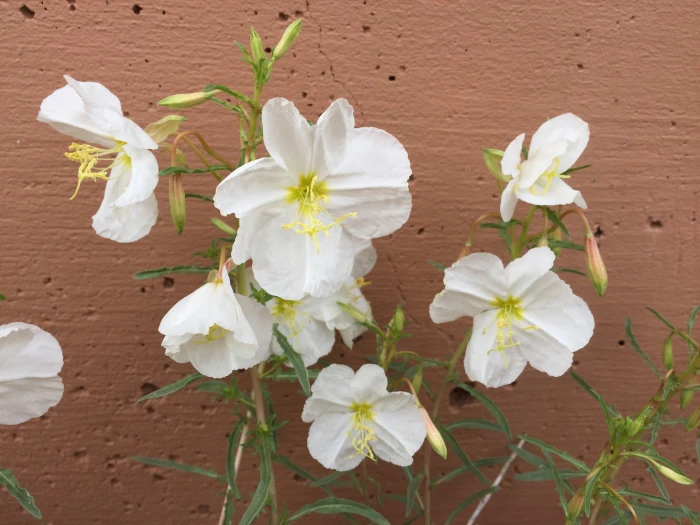Pale Evening Primrose
(Oenothera pallida)
Pale Evening Primrose (Oenothera pallida)
/
/

Robb Hannawacker
Public Domain
Image By:
Robb Hannawacker
Recorded By:
Copyright:
Public Domain
Copyright Notice:
Photo by: Robb Hannawacker | License Type: Public Domain | License URL: http://creativecommons.org/publicdomain/zero/1.0/ | Rights Holder: Robb Hannawacker | Publisher: iNaturalist | Date Created: 2017-03-23T20:16:52Z |














































Estimated Native Range
Climate Requirements for Fort Worth, Texas
| This Plant | Your Site | Plant Suitability for Your Location | ||
|---|---|---|---|---|
| • Precipitation | 3" - 65" | 33" | Your precipitation may be too high for this plant. | Too high |
| • High Temp. | 67°F - 110°F | 97°F | Your summer temperatures are normal for this plant. | Excellent |
| • Low Temp. | -3°F - 51°F | 33°F | Your winter temperatures are normal for this plant | Excellent |
This plant may not grow well at your location - your precipitation is too high.
Summary
Oenothera pallida, commonly known as Pale Evening Primrose, is a perennial herb that can be deciduous or semi-evergreen, depending on the climate. It is native to dry open areas, such as prairies, plains, and rocky outcrops in the Intermountain West of the United States. This plant typically reaches a height of 0.3 feet (0.09 meters) and spreads 0.8-1 feet (0.2-0.3 meters). The Pale Evening Primrose has a sprawling habit with lance-shaped leaves and bears delicate, fragrant flowers that are pale pink to white, blooming profusely in late spring to early summer. The flowers open in the evening and close by the next noon on sunny days.
The Pale Evening Primrose is valued for its drought tolerance and the sweet-scented, showy flowers that attract pollinators such as bees and moths. It is often used in rock gardens, borders, and native plant gardens. It thrives in full sun to part shade and prefers well-drained soils, making it suitable for xeriscaping. While it requires low to medium water once established, it is important to avoid overwatering. There are no major disease or pest issues, but root rot can occur in poorly drained soils.CC BY-SA 4.0
The Pale Evening Primrose is valued for its drought tolerance and the sweet-scented, showy flowers that attract pollinators such as bees and moths. It is often used in rock gardens, borders, and native plant gardens. It thrives in full sun to part shade and prefers well-drained soils, making it suitable for xeriscaping. While it requires low to medium water once established, it is important to avoid overwatering. There are no major disease or pest issues, but root rot can occur in poorly drained soils.CC BY-SA 4.0
Plant Description
- Plant Type: Herb
- Height: 0.5-0.8 feet
- Width: 0.8-1 feet
- Growth Rate: Moderate
- Flower Color: White
- Flowering Season: Spring
- Leaf Retention: Semi-deciduous
Growth Requirements
- Sun: Full Sun, Part Shade
- Water: Low, Medium
- Drainage: Fast
Common Uses
Bank Stabilization, Bee Garden, Bird Garden, Butterfly Garden, Deer Resistant, Drought Tolerant, Fire Resistant, Fragrant, Groundcover, Hummingbird Garden, Low Maintenance, Rabbit Resistant, Showy Flowers
Natural Habitat
Native to dry open areas, such as prairies, plains, and rocky outcrops in the Intermountain West of the United States
Other Names
Common Names: Pale Evening-Primrose , Onagre Pâle
Scientific Names: Oenothera pallida , Oenothera pallida var. pallida , Oenothera pallida var. typica , Oenothera albicaulis var. pallida
GBIF Accepted Name: Oenothera pallida Lindl.